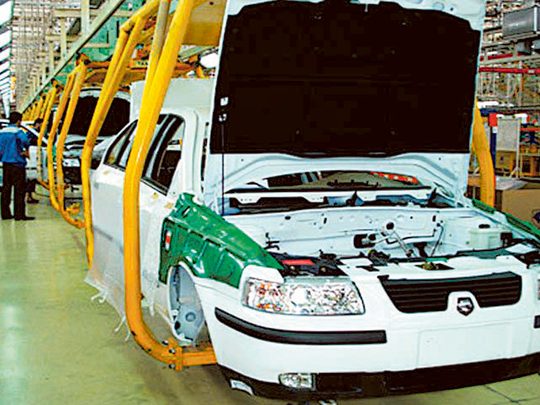
Damascus: The Syrian Ministry of Industry announced last week that a new indigenous automobile called “Syrians” will be released in mid-2017.
“Syrians”, according to the industry ministry, will have an automatic gearbox, ABS, a sophisticated dashboard, and a more powerful engine, adding that it would be made available to end users, especially employees of the public sector, through monthly instalments obtained from state-run banks.
The announcement raised eyebrows in a country torn-apart by six years of war, where a sharp gasoline crisis drags into its fourth week in a row, completely incapacitating gas stations, cars, and public transport buses.
The price of gasoline on the black market has gone through the roof, and stations are now run by soldiers with guns, prompting one person to sarcastically comment on Facebook; “Even if we buy this new car, with what will it run; solar energy?”
Ten years ago, Syrian authorities dreamt of joining the club of car-manufacturing countries.
With the strong backing of Iran Khodro, a Persian giant that has been manufacturing automobiles since the 1960s, the Sham Car was made at a competitive price of 725,000-875,000 Syrian pounds which was around $14,500-$17,500 (Dh53,240-Dh 64,255) at that time.
No official was willing to buy the car, preferring to buy foreign cars, and most Syrians were afraid because the car was not tested and they did not trust local manufacturing.
“Syrians” will be offered at 8 million SP ($15,238, Dh55,950) which is not affordable to most Syrians, especially with the devaluation of the Syrian pound due to 6 years of civil war.
But one key selling point is that the buyer would save on paying an import tariff and vehicle registration, which can sometimes inflate the price of the car by 25 per cent.
But it remains unclear who would buy the car while the country faces its worst fuel crisis in history.
Apart from that, over 40 per cent of the roads in Damascus are barricaded and sealed off, either by tyres or military checkpoints.
“Since 2011 we have not driven outside the city itself. Where do they expect us to go if battles are ongoing in every place around the country especially in the countryside of Damascus itself. Also most cars have stopped commuting because there is no gasoline at the stations — I haven’t moved my car for 10 days now,” Ramez Al Brinjikji, a mathematics teacher, told Gulf News.
Apart from the Sham cars, there are no new automobiles for sale in Syria anymore, only second-hand cars.
This is mainly due to the six-year embargo that prevents car manufacturers from operating in the Syrian market. There are no showrooms as well, since all foreign companies have closed down and their former galleries, situated on a highway approximately 25-km east of Damascus, have all been torched by the violence.
Sham was supposed to produce 10,000 cars annually but came to a grinding halt after outbreak of hostilities in 2011.
By late 2015 it reopened its offices in Damascus, putting 200 new cars on sale by August 2016.
Forty per cent of the company shares is owned by Iran Khodro while 25 per cent is handled by the Syrian private sector, and 35 per cent by the state-run Public Establishment for Engineering Production.
In recent years the joint Syrian-Iranian car faced fierce competition from affordable Chinese-made cars, like Geely and Brilliance, or the Romanian-made Dacias, and Malaysian Protons. Ironically, only two Russian brands entered the Syrian market, Lada and Oka.
The first survives while the second, a small city car, was devoured on the market by more sophisticated carmakers and disappeared completely, even after the Russian military joined the Syrian battlefield in 2015.












